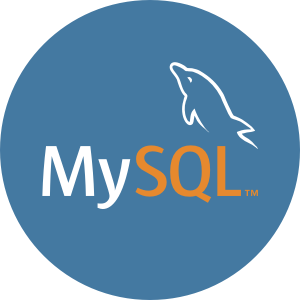Graphite vs MySQL
A detailed comparison
Compare Graphite and MySQL for time series and OLAP workloads
Learn About Time Series DatabasesChoosing the right database is a critical choice when building any software application. All databases have different strengths and weaknesses when it comes to performance, so deciding which database has the most benefits and the most minor downsides for your specific use case and data model is an important decision. Below you will find an overview of the key concepts, architecture, features, use cases, and pricing models of Graphite and MySQL so you can quickly see how they compare against each other.
The primary purpose of this article is to compare how Graphite and MySQL perform for workloads involving time series data, not for all possible use cases. Time series data typically presents a unique challenge in terms of database performance. This is due to the high volume of data being written and the query patterns to access that data. This article doesn’t intend to make the case for which database is better; it simply provides an overview of each database so you can make an informed decision.
Graphite vs MySQL Breakdown
 |
 |
|
| Database Model | Time series database |
Relational database |
| Architecture | Graphite can be deployed on-premises or in the cloud, and it supports horizontal scaling by partitioning data across multiple backend nodes. |
MySQL uses a client-server model with a multi-layered server design. It supports the SQL query language and offers various storage engines, such as InnoDB and MyISAM, for different use cases. MySQL can be deployed on-premises, in the cloud, or as a managed service. |
| License | Apache 2.0 |
GNU General Public License v2 (for the open-source Community Edition) |
| Use Cases | Monitoring, observability, IoT, real-time analytics, DevOps, application performance monitoring |
Web applications, e-commerce, data warehousing, content management systems, business applications |
| Scalability | Horizontally scalable, supports clustering and replication for high availability and performance |
Supports vertical scaling by adding more resources to a single node; horizontal scaling can be achieved through replication, sharding, and third-party tools |
Graphite Overview
Graphite is an open-source monitoring and graphing tool created in 2006 by Orbitz and open sourced in 2008. Graphite is designed for storing time series data and is widely used for collecting, storing, and visualizing metrics from various sources, such as application performance, system monitoring, and business analytics.
MySQL Overview
MySQL is an open source relational database management system that was first released in 1995. It is one of the most popular databases worldwide due to its ease of use, reliability, and performance. MySQL is widely used for web applications, online transaction processing, and data warehousing. Oracle Corporation acquired MySQL in 2010, but it remains open source software with an active community of contributors.
Graphite for Time Series Data
Graphite is specifically designed and optimized for time series data. It uses the Whisper database format, which efficiently stores and manages time series data by automatically aggregating and expiring data based on user-defined retention policies. Graphite supports a wide range of functions for querying, transforming, and aggregating time series data, enabling users to create custom graphs and dashboards. However, as Graphite focuses exclusively on time series data, it may not be suitable for other types of data or use cases that require more advanced data modeling or querying capabilities.
MySQL for Time Series Data
MySQL can be used for storing and analyzing time series data, but it will not be as efficient as a dedicated time series databases. MySQL’s flexibility and support for various indexing techniques can make it a suitable choice for small to medium sized time series datasets. For large-scale time series data workloads, with high write throughput or use cases where low latency queries are required, MySQL will tend to struggle unless highly customized.
Graphite Key Concepts
- Metric: A metric in Graphite represents a time series data point, consisting of a path (name), timestamp, and value.
- Series: A series is a collection of metrics that are all related to the same thing. For example, you might have a series for CPU usage, a series for memory usage, and a series for disk usage.
- Whisper: Whisper is a fixed-size, file-based time series database format used by Graphite. It automatically manages data retention and aggregation.
- Carbon: Carbon is the daemon responsible for receiving, caching, and storing metrics in Graphite. It listens for incoming metrics and writes them to Whisper files.
- Graphite-web: Graphite-web is the web application that provides a user interface for visualizing and querying the stored time series data.
MySQL Key Concepts
- Table: A collection of related data organized in rows and columns, which is the primary structure for storing data in MySQL.
- Primary Key: A unique identifier for each row in a table, used to enforce data integrity and enable efficient querying.
- Foreign Key: A column or set of columns in a table that refers to the primary key in another table, used to establish relationships between tables.
Graphite Architecture
Graphite’s architecture consists of several components, including Carbon, Whisper, and Graphite-web. Carbon is responsible for receiving metrics from various sources, caching them in memory, and storing them in Whisper files. Whisper is a file-based time series database format that efficiently manages data retention and aggregation. Graphite-web is the web application that provides a user interface for querying and visualizing the stored time series data. Graphite can be deployed on a single server or distributed across multiple servers for improved performance and scalability.
MySQL Architecture
MySQL is a relational database management system that uses SQL for defining and manipulating data. It follows the client-server model, where a MySQL server accepts connections from multiple clients and processes their queries. MySQL’s architecture includes a storage engine framework that allows users to choose from different storage engines, such as InnoDB, MyISAM, or Memory, to optimize the database for specific use cases.
Free Time-Series Database Guide
Get a comprehensive review of alternatives and critical requirements for selecting yours.
Graphite Features
Real-time monitoring and visualization
Graphite provides real-time monitoring and visualization capabilities, allowing users to track and analyze their time series data as it is collected.
Flexible querying and aggregation functions
Graphite supports a wide range of functions for querying, transforming, and aggregating time series data, enabling users to create custom graphs and dashboards tailored to their specific needs.
Data retention and aggregation
Graphite’s Whisper database format automatically manages data retention and aggregation, reducing storage requirements and improving query performance.
MySQL Features
ACID compliance
MySQL supports transactions and adheres to the ACID (Atomicity, Consistency, Isolation, Durability) properties, ensuring data integrity and consistency.
Scalability
MySQL can scale both vertically and horizontally, depending on the storage engine and configuration.
Replication and high availability
MySQL supports various replication techniques, including master-slave and master-master replication, to provide high availability and fault tolerance.
Graphite Use Cases
Application performance monitoring
Graphite is widely used for monitoring the performance of applications and services, helping developers and operations teams track key metrics, such as response times, error rates, and resource utilization. By visualizing these metrics in real-time, users can identify performance bottlenecks, detect issues, and optimize their applications for better performance and reliability.
Infrastructure and system monitoring
Graphite is also popular for monitoring the health and performance of servers, networks, and other infrastructure components. By collecting and analyzing metrics such as CPU usage, memory consumption, network latency, and disk I/O, IT administrators can ensure their infrastructure is running smoothly and proactively address potential issues before they impact system performance or availability.
Business analytics and metrics
In addition to technical monitoring, Graphite can be used for tracking and visualizing business-related metrics, such as user engagement, sales data, or marketing campaign performance. By visualizing and analyzing these metrics over time, business stakeholders can gain insights into trends, identify opportunities for growth, and make data-driven decisions to improve their operations.
MySQL Use Cases
Web applications
MySQL is a popular choice for powering web applications, content management systems, and e-commerce platforms due to its flexibility, ease of use, and performance.
Online transaction processing (OLTP)
MySQL is suitable for OLTP systems that require high concurrency, fast response times, and support for transactions.
Data warehousing
While not specifically designed for data warehousing, MySQL can be used for small to medium-sized data warehouses, leveraging its support for indexing, partitioning, and other optimization techniques.
Graphite Pricing Model
Graphite is an open-source project, and as such, it is freely available for users to download, install, and use without any licensing fees. However, users are responsible for setting up and maintaining their own Graphite infrastructure, which may involve costs related to server hardware, storage, and operational expenses. There are also several commercial products and services that build on top of or integrate with Graphite, offering additional features, support, or managed hosting options at varying price points.
MySQL Pricing Model
MySQL is available in multiple editions with different feature sets and pricing models. The MySQL Community Edition is open source and free to use, while the MySQL Enterprise Edition includes additional features, such as advanced security, monitoring, and management tools, and requires a subscription. Pricing for the Enterprise Edition depends on the number of server instances and the level of support required.
Get started with InfluxDB for free
InfluxDB Cloud is the fastest way to start storing and analyzing your time series data.